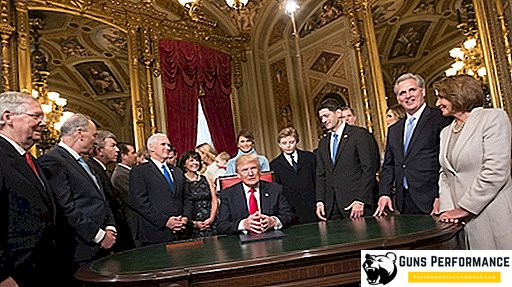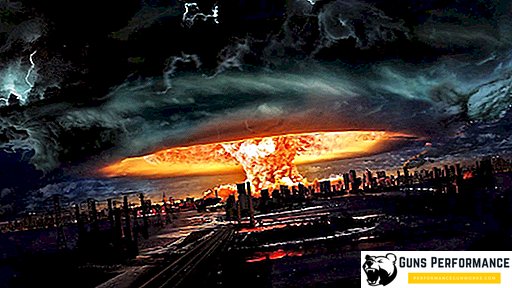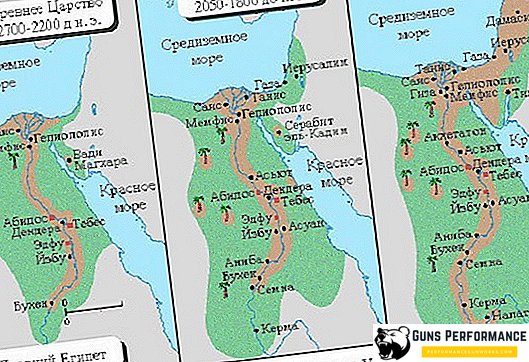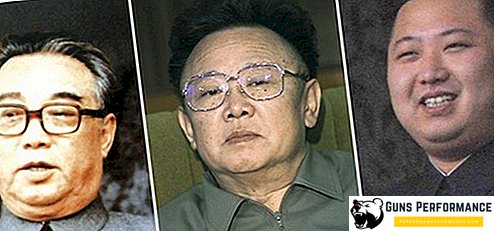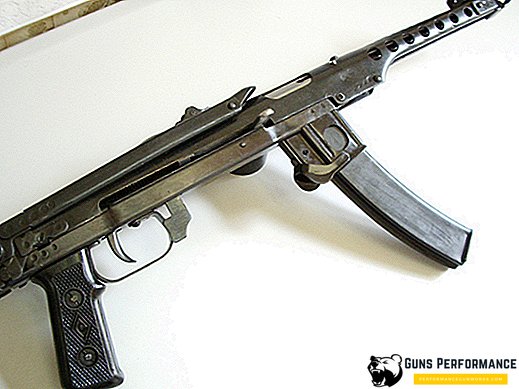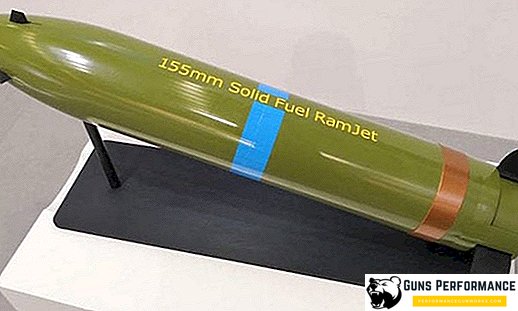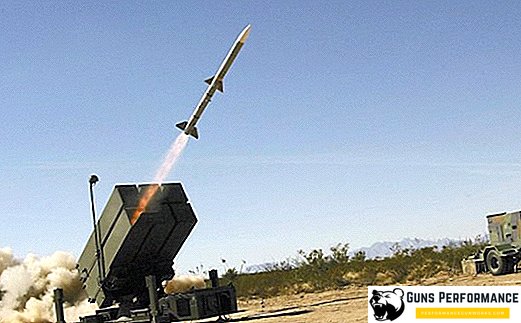After World War II, two powerful blocs formed in Europe. One of them, the North Atlantic Alliance (or NATO), was practically under US control, and its task was to resist the influence of the USSR. The other block, known as the Warsaw Pact Organization (or ATS), was under the similar control of the Soviet Union and opposed NATO. However, being smooth on paper, the situation in both blocks was not always cloudless. So, in NATO, one of the adverse events was the demarche of France, which, while remaining formally a member of the political bloc, withdrew from the military. Also in 1974, Greece emerged from the bloc, however, returning seven years later.
The situation in the Warsaw Pact Organization was also uneasy. Back in 1948, when the Organization did not exist in fact, but the pro-Soviet bloc in Europe had already been formed, Yugoslavia left it. In 1956, Hungary attempted to withdraw from the Department of Internal Affairs, which could seriously change the balance of forces in the region. After the bloody battles, Hungary still remained in the bloc. 1968 for the Warsaw Pact was marked by events in Czechoslovakia.
Prague Spring and its causes
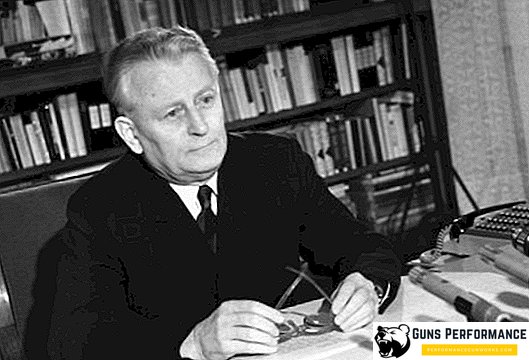
By early 1968, Antonin Novotny, the country's president and first secretary of the Central Committee of the Communist Party of Czechoslovakia, was in power in the Czechoslovak Socialist Republic (Czechoslovakia). However, his popularity among the population of the country was already under great doubt, and on January 4, 1968, he was removed from his post as first secretary. Alexander Dubchek, who came to this post, is a supporter of reforms and liberalization of the socialist system.
The press launched a campaign against Novotny. Alexander Dubchek was not its initiator, but at the same time he did not interfere with it. Under public pressure, Antonin Novotny was forced to resign from the post of the President of Czechoslovakia on March 28, 1968. After this, Ludwik Svoboda became the president, who also fully supported the political course towards liberalization.
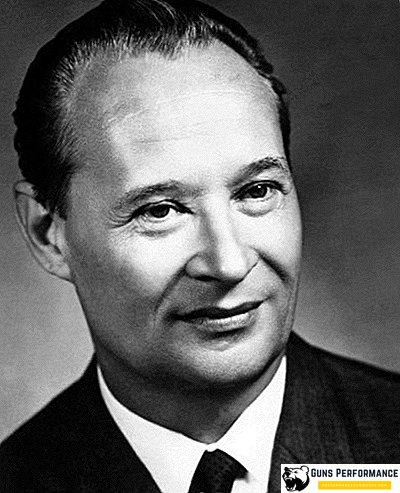
Thus, by April 1968, supporters of Aleksandr Dubcek and his political ideas received power in Czechoslovakia. Immediately, the policy was taken to increase civil liberties, censorship was relaxed in the press, and the possibility of political discussions appeared. At the same time, it was decided to introduce a multiparty system in the country - an idea completely unprecedented for the socialist countries. The conduct of domestic policy has become even more independent of the Soviet Union, the Czechoslovak government somewhat distanced itself from its powerful eastern neighbor. However, at the same time, Czechoslovakia had no intention of leaving the Warsaw Pact.
The new policy pursued by the Czechoslovak government was, according to A. Dubcek, aimed at ensuring that socialism "did not lose its human face." Already in the spring of 1968, political parties began to be re-established, which were closed earlier, the largest of which was the Social Democratic Party. Opened and political clubs, including non-partisan. Also an important event was the restoration of the Slovak Greek Catholic Church.
At the same time, with the development of reforms, anti-Soviet sentiments increased in Czechoslovakia. The Czechoslovak leadership understood that it was unlikely that the USSR would react positively to these political changes, which was absolutely true. If you look at the events of March-August 1968 from today, it becomes clear that if the Soviet Union did not interfere in these processes, the socialist system in Czechoslovakia would fall already in 1969, which seriously destabilized the situation in the ATS. It is possible that anti-communism would not have begun to develop in other countries of the Warsaw bloc, and this would inevitably lead to the collapse of the world socialist system, which was proved in the late 80s and early 90s of the XX century.
In this regard, the Soviet leadership was very concerned about the political processes in the neighboring country. The criticism of the Czechoslovak government and its reforms was heard on March 23, 1968 at the congress of the communist parties in Dresden, and since then has only increased. However, with the deterioration of the situation for the Communist Party of Czechoslovakia in Czechoslovakia, it became clear that in essence a smooth transition from socialism to capitalism is the goal of the new Czechoslovak government. Having exhausted the possibilities of a peaceful settlement of disagreements, the Soviet leadership had no choice but to solve the political crisis militarily.
Preparations for the introduction of troops
In the spring of 1968, the General Headquarters of the Armed Forces of the USSR developed a plan of operation, which was code-named "Danube". This plan included the introduction of Soviet troops into Czechoslovakia from the territory of the USSR, GDR, Poland and Hungary, the defeat of its army (subject to the latter’s resistance) and the suppression of anti-communist uprisings and demonstrations. To test the actions of the headquarters and troops on the territory of the Czechoslovak Socialist Republic, the Šumava exercise was held in June, during which the plan of the operation was somewhat corrected.
In the summer of 1968, partial mobilization was carried out in the USSR, which was covered up with supposedly large-scale maneuvers and exercises of the Soviet Army. However, in practice, the divisions, replenished by reservists, concentrated in the Carpathian Military District and prepared for entry into Czechoslovakia. At the same time, preparations were also actively taking place in the territories of the Warsaw Pact member countries adjacent to Czechoslovakia.
As a result, a group of 26 divisions was allocated for Operation Danube. They were the largest contingent of Soviet troops - 18 divisions, including airborne, motorized rifle and tank, as well as 22 aviation and helicopter regiments. Poland allocated 5 infantry divisions. The GDR singled out two divisions: motorized rifle and tank. Hungary was able to allocate a motorized rifle division, and Bulgaria - two motorized rifle regiments. In total, the number of groups intended for entry into Czechoslovakia was about half a million people.
For the convenience of command and control, 3 fronts were deployed, as well as one task force. Troops of the Central Front were stationed in the GDR and southwestern Poland. It consisted of the troops of the following armies: the 13th, the 38th combined arms, the 8th Guards Tank, and the 57th Air Guards. The Carpathian Front was deployed in south-eastern Poland and in Western Ukraine. It consisted of the troops of the 11th, 20th Guards and the 37th Air Army. In order to cover the actions of the troops entering the territory of Czechoslovakia, the Southern Front was deployed in Hungary. In addition, the Balaton task force was deployed here, which included two Soviet divisions and a number of parts of Hungary and Bulgaria.
After unsuccessful diplomatic maneuvers and negotiations, the Soviet leadership decided to carry out Operation Danube. The beginning of the operation - the evening of August 20, 1968.
Operation "Danube"
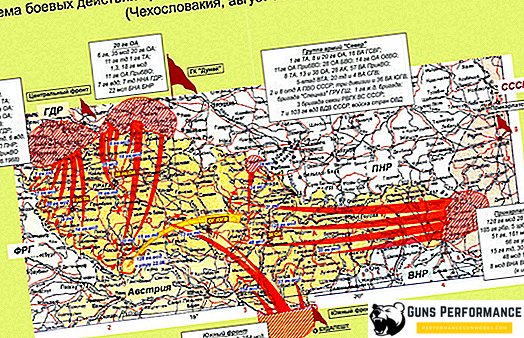
At 10:15 pm on August 20, a signal “Vltava-666” was received by the troops intended for entry into Czechoslovakia, which marked the beginning of the operation. Soon after, the troops of the Central and Carpathian fronts moved deep into Czechoslovak territory. The tanks were marked with white stripes, designed to identify their troops. Fighting vehicles without bands to be neutralized without the use of weapons. In the event of a meeting with NATO armored vehicles, tanks were instructed to stop, deploy infantry units, but under no circumstances use weapons.
At 2 am on August 21 at the Prague Ruzyne aerodrome, the landing of the Soviet 7th airborne division was carried out by landing method. At the same time, the landing speed was so fast that even after a short time, the troops were able to operate in the capital.
The news of the introduction of Soviet troops took the Czechoslovak government by surprise. The Presidium of the CPC urgently gathered in the office of A. Dubcek, where they made a statement condemning Soviet actions, as well as calling for refraining from resistance to Soviet troops. However, at 4 am, members of the government were seized by Soviet paratroopers, thus losing power. Later they were exported to the USSR.
By the end of August 21, the troops of the Warsaw Pact member countries were able to seize all the main points of Czechoslovakia, thereby carrying out the main part of Operation Danube. Such a rapid movement of troops across the country is explained by the almost complete absence of resistance from the Czechoslovak army and the fact that the NATO countries did not intervene in this conflict, which was also quite reasonable. The destabilization of the situation in the center of Europe at that time was not needed by anyone, and the American leadership connected in Vietnam did not have any instruments of influence here.
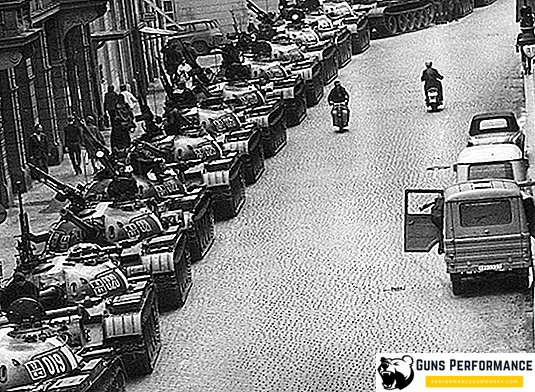
Immediately after obtaining complete control over the territory of the country, the Soviet leadership made efforts to form a new Czechoslovak government. However, in conditions when pro-Soviet politicians were discredited by previous events, as well as statements by the Czechoslovak government, this was very difficult to do.
At the same time, a campaign of passive resistance to Soviet troops from the country's population was launched on the streets of Czechoslovakia. Peaceful citizens often changed road signs, built barricades, creating obstacles to the movement of Soviet troops, refused to provide Soviet soldiers with food, fuel and necessary information. There are also cases when the population of Czechoslovakia threw stones at the Soviet columns, as well as spoiled food, led to political discussions with ordinary soldiers. However, despite the incidents, Soviet soldiers were strictly forbidden to open fire.
In the period from August 24 to August 27, 1968, negotiations between the Soviet and Czechoslovak leaders took place in Moscow in a very tense situation. The result of them was the signing of the Moscow Agreement, according to which the Czechoslovak government canceled a number of reforms in exchange for the withdrawal of Soviet troops from the country when the situation there "finally stabilized."
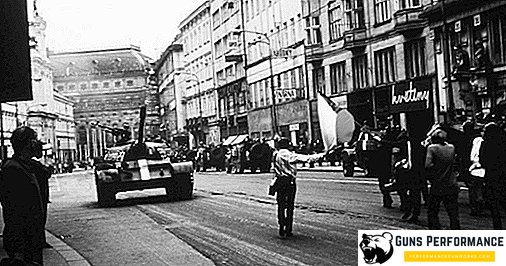
The withdrawal of troops began as early as October 17, 1968, and ended a month later.
Losses of the parties and the results of the operation "Danube"
Losses among the troops introduced into Czechoslovakia are approximately 111 dead and 350 wounded. Of these, the greatest number of casualties was for the Soviet troops: 96 dead. On the Czechoslovak side, the casualties are about 110 dead and about 500 wounded. Also 5 Czechoslovak soldiers committed suicide in protest against Soviet actions.
From a military point of view, the Danube operation was successful in design and execution. The troops of the allied countries that entered the territory of Czechoslovakia from three sides, in the shortest possible time, managed to take control of its main objects and suppress any possibility of military resistance. Thus, the “Hungarian” scenario of 1956 was not repeated.
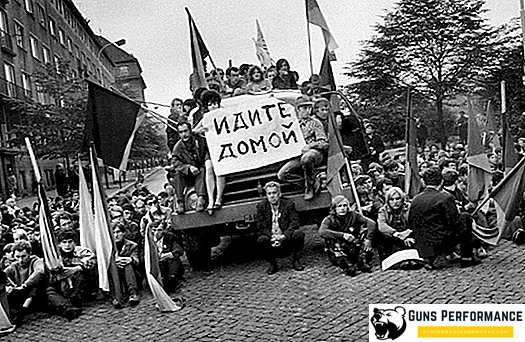
However, from a political point of view, the introduction of troops into Czechoslovakia was a very sensitive blow to the image of the USSR, both in the West and among the countries of the Warsaw Pact. In the West, Operation Danube was used to give the Soviet Union even more sinister and repulsive features. The opinion finally spread among the Warsaw Pact countries that it would not be possible to get out of the pro-Soviet bloc just like that. For the Soviet leadership, however, events in Czechoslovakia became an alarming bell, proving that the omission of the political situation in one’s own country or in one of the ATS countries would inevitably lead to the collapse of the entire world socialist system.
The campaign of boycott and civil disobedience against the USSR, which unfolded in subsequent years, seriously worsened the Soviet international position. In 1969, two resonant self-immolations of Czechoslovak students, Jan Palach and Jan Zajic, occurred in protest against Soviet actions. The public was indignant, condemning the path of development of the country, imposed by the Soviet leadership.
Based on this, we can say that Operation Danube, which was very successfully carried out by the Soviet leadership, became a kind of prologue to the development of political movements in the ATS countries other than socialist ones, and thus finally doomed the Organization to death. The world socialist system could no longer exist without the support of the USSR.


